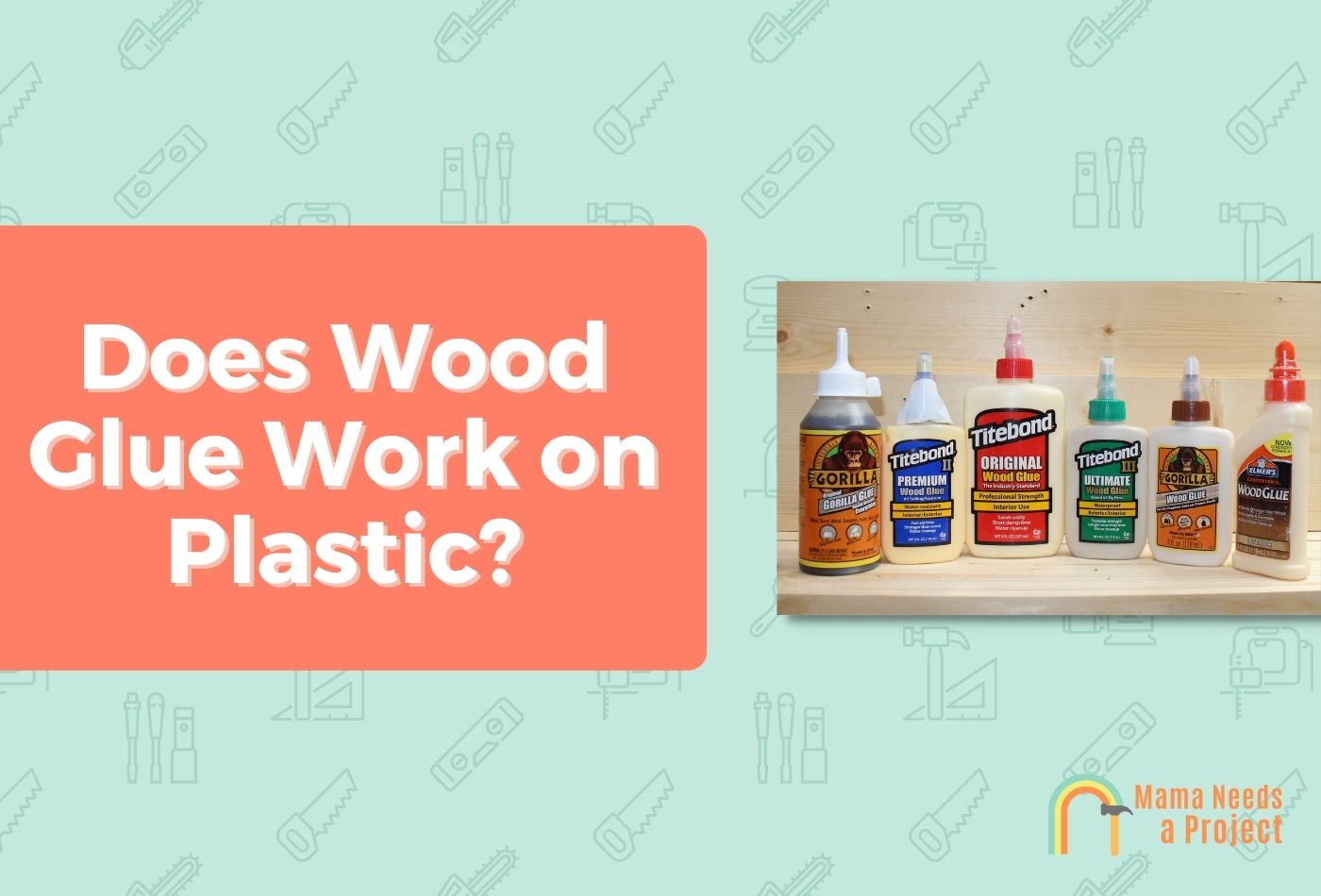Does Wood Glue Work on Plastic? (Tips & Tricks to Gluing Plastic)
Wondering if wood glue works on plastic? I’ve worked on countless DIY projects and here’s what you need to know!
Only certain kinds of wood glue can be used to join wood and plastic. Typically PVA wood glues like Elmer’s or Titebond won’t work on plastic. Epoxy and polyurethane glues, on the other hand, will work great because of their chemical composition. You can also use Super Glue or Crazy glue.
Can You Use Wood Glue on Plastic?
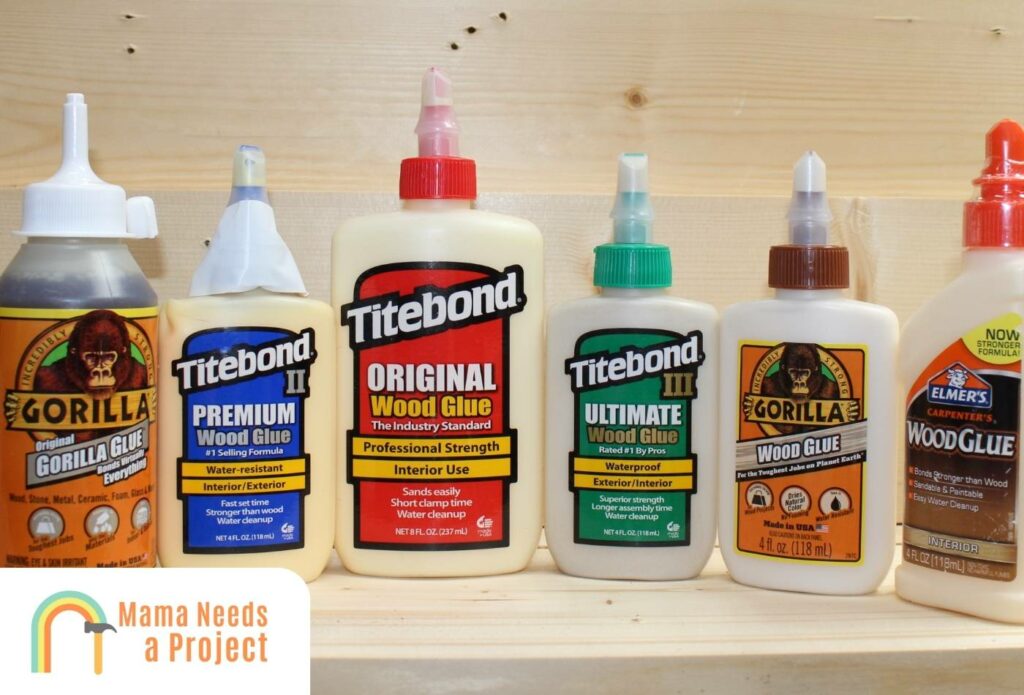
The most common wood glue, PVA wood glue, cannot be used to bond wood and plastic.
While it might work some a short timeframe with a very weak bond, it’s not a durable, long lasting solution and I wouldn’t recommend it.
That said, you can use an epoxy glue, hot glue, or a polyurethane glue for bonding plastic to wood.
These are stronger glues that can bond porous wood and non porous surfaces together.
Best Plastic to Wood Glue
Epoxy Glue
If you’re gluing plastic to wood, epoxy glue can be one of the most durable and strongest glues you should consider.
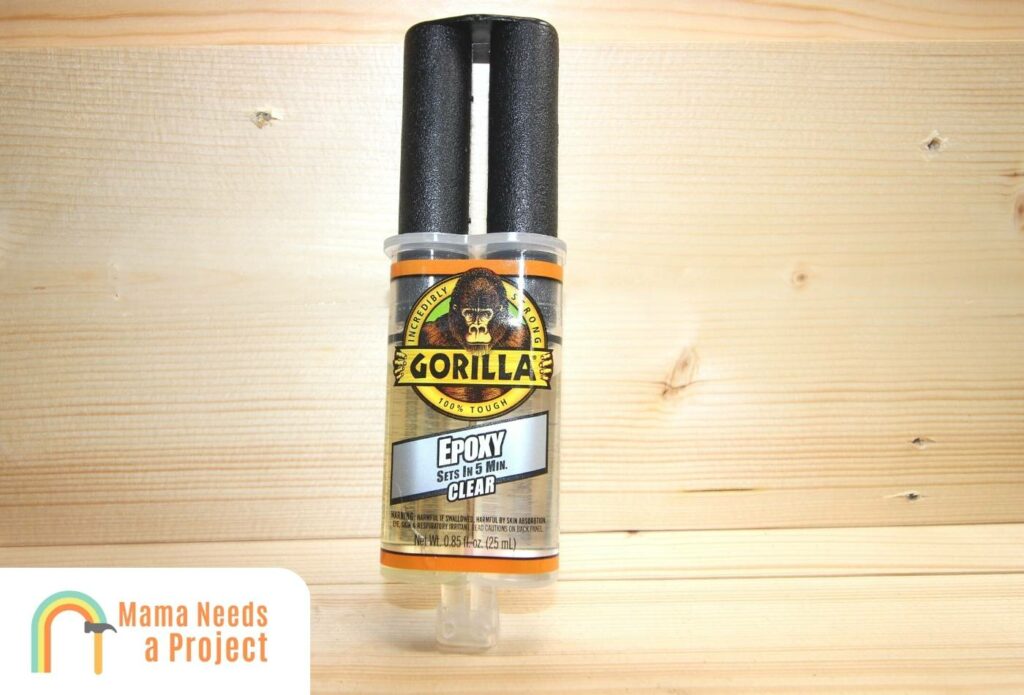
Epoxy glues are great at bonding just about any surface, including wood, plastic, rubber, metal, and other surfaces.
This is a more unique type of wood glue because it only hardens once mixed together. That’s why most epoxy glues come in separate containers that mix together once applying.
The only downside to this type of glue is the price and how long it takes to cure. Epoxy glues are typically more expensive and can take over 24 hours to fully cure.
Additionally, epoxy glue isn’t the most environmentally friendly substance and it can be toxic if you don’t use it properly.
If you’re looking for a durable bond between a plastic surface and wood, using an epoxy glue is your best bet and I highly recommend it.
Polyurethane Glue
Polyurethane glue is most notable for the brand name Gorilla Glue. This glue is one of the strongest glues on the market and it works great to glue plastic to wood.
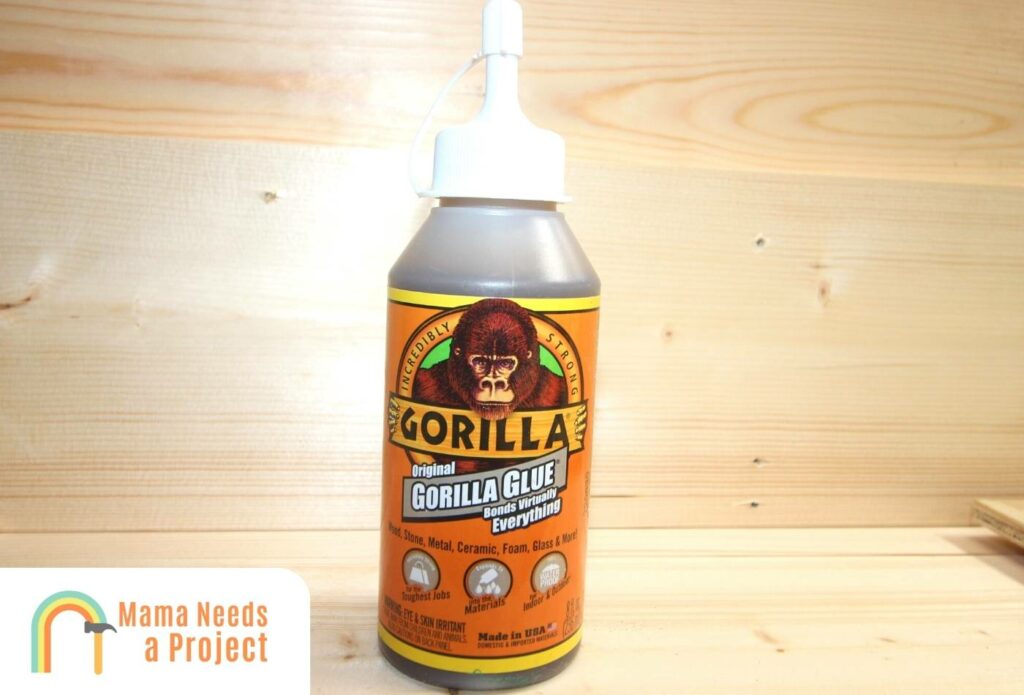
Just like epoxy glues, it works on numerous surfaces including wood, plastic, stone, metal, rubber, and other surfaces.
It’s also the best waterproof wood glue because of how hard it dries. It’s similar to an epoxy glue, except only slightly less strong.
Polyurethane glue is an extremely versatile glue that I would recommend if you need to attach plastic to wood.
Cyanoacrylate Glue
Also known as Super Glue or Crazy Glue, cyanoacrylate glue is extremely effective and a great glue for gluing plastic to wood.
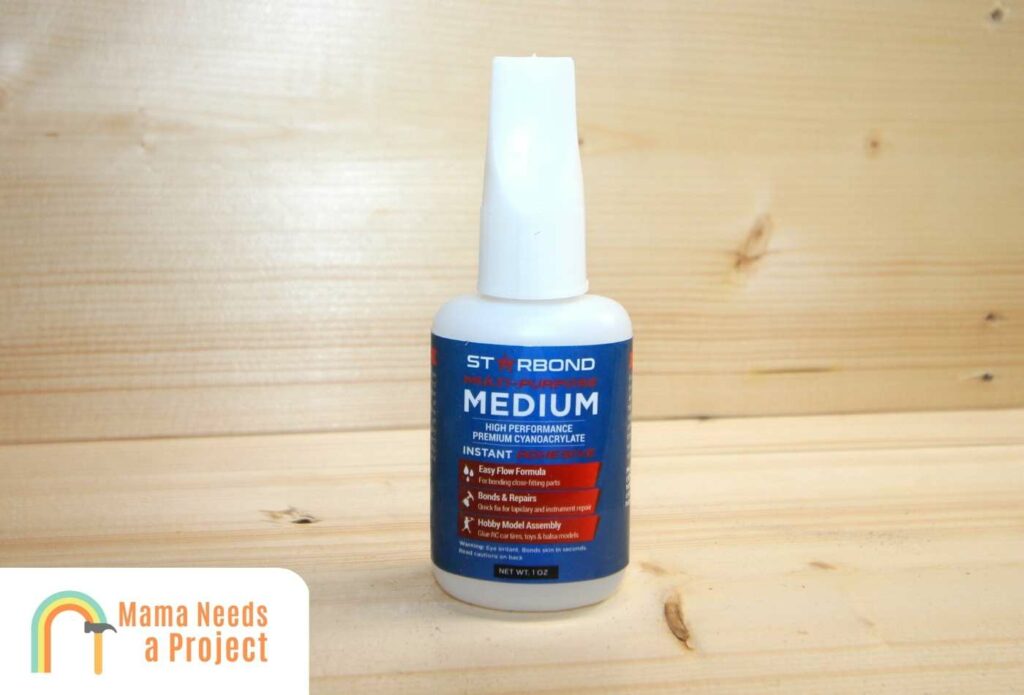
This type of glue creates a strong bond that can last for years, which is why so many crafters use it regularly on their projects.
Super glue is also one of the more affordable glues and you can find it just about anywhere, including your local hardware store, retailers like Walmart, or online through Amazon.
This type of glue dries pretty quickly, making it perfect for jobs where a fast drying glue is required.
If you need to glue plastic to wood, I would also recommend a cyanoacrylate glue for the job.
One thing to keep in mind when using this type of glue is that because of how quickly it begins to dry, if you’re working with a large surface, you may not be able to coat the entire surface before it starts drying.
Contact Cement
Contact cement is another popular adhesive that can be used to bond plastic to wood. This type of adhesive is different than others in that both surfaces must be coated with the substance before bonding them.
Once applied to both surfaces, give the material a minute or so to start to dry before bonding them together.
Another important consideration is the surface area of the materials you’re bonding. The larger the surface, the stronger the bond when it comes to contact cement.
Therefore if you’re working with smaller surfaces, it’s better to use an epoxy or polyurethane glue.
It also takes a little longer to dry, so keep that in mind when choosing which glue is best for your project.
- DAP weld wood original contact cement premium quality, neoprene-based contact cement that meets the stringent…
- High strength and initial grab make it ideal for most projects
- Solvent base formula
Silicone Caulk
In some cases, silicone caulk can help you when sticking plastic to wood. This isn’t a great permanent bond, but it can provide some support and seal when connecting plastic and wood together.
If you’re gluing plastic to wood with silicone caulk, don’t expect the strongest bond possible.
It can also take slightly longer to dry than other adhesives, so keep that in mind if you need a glue that dries quickly.
Hot Glue
Hot glue works on wood and can also be used when gluing plastic to wood. While it’s not as strong as an epoxy glue, it’s more effective than a traditional PVA glue.
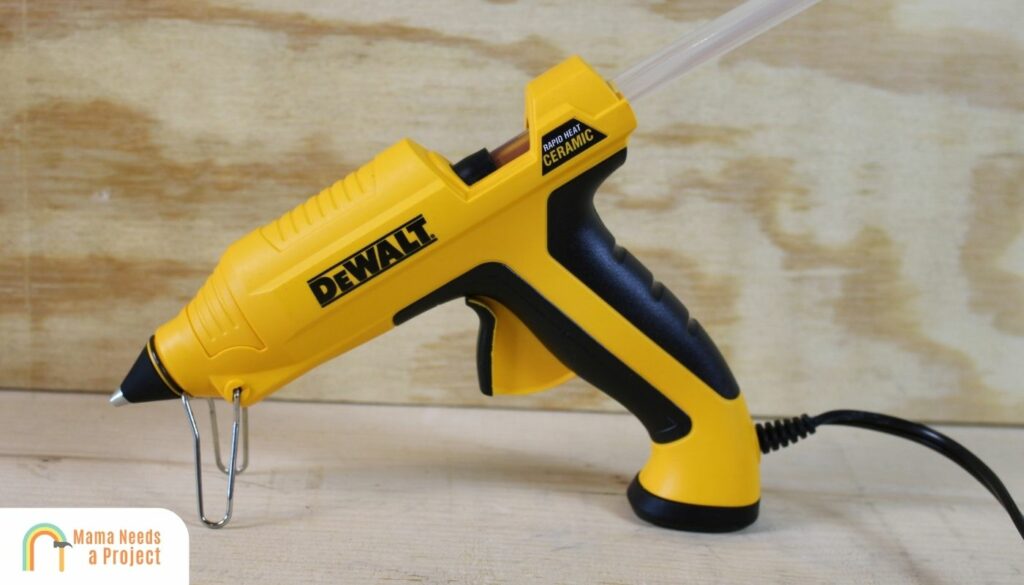
It’s also not great for exterior work because exposure to the sun can cause it to melt.
Because of the nature of hot glue, it can easily find its way through any porous surface like wood and join plastic surfaces to it.
Remember, you won’t get a super strong bond with hot glue and it’s not heat resistant, but it works fine on many DIY projects and crafts.
How to Glue Wood to Plastic
1. Purchase Your Glue
Purchasing or finding a glue is the first step to glue plastic to wood. If you don’t have a glue handy, most types of glue can be purchased at your local hardware store or retailer. You can also purchase them online through Amazon. Most glues are budget friendly and will cost under $10.
2. Clean the Surfaces
Dust, grime, and oils can cause your glue not to adhere properly to plastic and wood.
Before you apply glue, be sure to clean off the plastic to ensure there are no oils left that will prevent a proper bond.
You can use a clean, damp cloth with some dish soap to remove any grime from the surface.
3. Roughen the Plastic Surface
One tip that can help you to get the strongest bond possible is to roughen the plastic surface before you apply glue.
You can use sandpaper or another abrasive material to lightly roughen the surface of the plastic.
This will help the glue to adhere better to the surface when gluing wood to plastic.
4. Apply Glue
Next, apply the glue to the surface of the wood or plastic surfaces and join them together. If you’re using contact cement, you’ll need to apply the substance on both surfaces. If you’re using another type of glue, you should be able to place the glue on a single surface and then join them together.
You should always apply a thin layer that will cover the entire surface area. Be sure not to use too much or too little. Because some of these glues can be difficult to remove, applying too much can cause it to show
5. Clamp the Surfaces
After applying your glue, clamping the surfaces together will ensure the strongest bond possible. While some glues may not require clamping, it’s best practice to get a stronger bond.
For most glues, around 30 minutes to 1 hour of clamping is best while the glue begins to dry.
When clamping, if excess glue seeps out, try to wipe it away as soon as possible as some glues are difficult to remove once dried.
6. Let it Cure Completely
Finally, let the glue dry completely. The time it takes wood glue to dry will vary depending on the type of glue you’re using.
For example, an epoxy glue will take longer to dry than an cyanoacrylate glue.
In most cases, it can take around 24 to 48 hours for your glue to fully dry and cure, but you can check the label of your glue to be sure.
Tips When Gluing Plastic to Wood
- Make sure your glue isn’t expired. While it can take years for most glues to expire and go bad, make sure it’s still in working order.
- Clean the surface before applying. Cleaning the plastic surface before applying glue will ensure there is no residue or oils that prevent the glue from sticking.
- Roughen the plastic. Roughening the plastic with sandpaper will help create a stronger bond when joining plastic to wood.
- Wear gloves. Gloves will not only help protect your hands but also prevent the oils from your hands from getting on the plastic and prevent sticking.
- Close the glue immediately after using. To ensure your glue lasts for years, be sure to close the cap immediately after you’re doing using it.
- Store the glue in a cool, dry place to extend its shelf life.
- Glue in a well ventilated area. Some glues, like epoxy glue, contain more VOCs than others. Working in a well ventilated area can help disperse the VOCs so you don’t breathe in as many.
Does Gorilla Glue work on plastic?
Yes! Gorilla glue will work on plastic and wood. That said, Gorilla wood glue won’t work great on plastic, so be sure to purchase the original Gorilla Glue for a strong bond.
What is the strongest glue for plastic on wood?
The strongest glue for plastic to wood is an epoxy resin glue. Polyurethane glues and Super glue are also quite strong and great for gluing plastic to wood, but not as strong as an epoxy glue.
Will liquid nails glue wood to plastic?
Yes! Liquid nails can bond plastics and wood together. Construction adhesives are great at bonding just about any type of surface including wood, plastic, stone, rubber, and other surfaces.
Does Gorilla Wood Glue work on plastic?
No, Gorilla Wood Glue doesn’t work well when bonding plastic to wood. I would recommend going with another type of glue to create a strong bond. While this glue is better than other traditional PVA glues, it’s not great at joining plastic to wood.
Does Elmer’s glue work on plastic?
No, Elmer’s glue doesn’t work well with plastics. While it may create a temporary bond, it won’t last long on most plastics.
Final Thoughts
Certain types of wood glue can be used to glue plastic to wood, but not all of them. PVA wood glues like Elmer’s and Titebond Original will not work great on plastic, so it’s best to avoid these if possible.
Instead, I recommend using an epoxy resin or polyurethane glue for gluing wood to plastic and creating a strong bond that will last.
You can also use hot glue, contact cement, or some silicone caulks – but these won’t create as strong of a bond.

